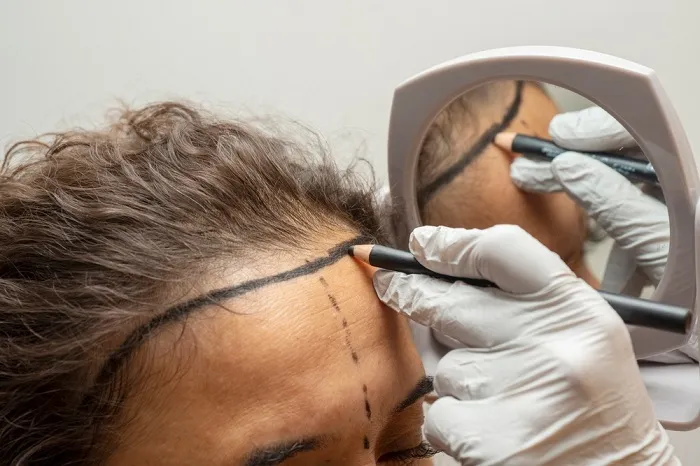Hair transplants are one of the most popular solutions for individuals suffering from hair loss. With advancements in modern technology and the growing interest in aesthetic procedures, more people are opting for hair transplants to regain a fuller head of hair. However, despite the success of these procedures, many patients experience temporary hair loss after a transplant, which can be a cause of concern. This article explores why hair falls out after a hair transplant, the reasons behind this phenomenon, and the essential information you need regarding hair transplant types, hair transplant costs, hair transplant recovery time, and hair transplant risks.
What Happens During a Hair Transplant?
Before diving into why hair falls out after a transplant, it’s important to understand what happens during the procedure. A hair transplant involves removing hair follicles from areas with dense hair growth (usually the back or sides of the head) and transplanting them into balding or thinning areas. There are different hair transplant types, such as follicular unit extraction (FUE) and follicular unit transplantation (FUT), which can affect how the hair grows after the procedure.
Why Does Hair Fall Out After a Transplant?
The phenomenon of hair falling out after a transplant is known as shedding or shock loss. This is a common and natural part of the hair transplant recovery process. Here are some reasons why this happens:
Trauma to the Hair Follicles: During the transplant procedure, hair follicles are relocated to new sites. This process causes a temporary disruption in the natural hair growth cycle, leading to shedding.
Hair Growth Cycle Disruption: The hair follicles go through different phases: anagen (growth), catagen (transition), and telogen (resting). The trauma of the procedure may push many follicles into the telogen phase, leading to shedding.
Shock Loss: Shock loss occurs due to the stress placed on the scalp and hair follicles during the surgery. This can result in temporary hair loss in both transplanted and non-transplanted areas.
When Does Hair Start Growing After a Transplant?
Hair growth after a transplant typically starts to become visible around 3-4 months post-surgery. However, this varies depending on individual factors, such as age, health, and the method used for the transplant. The recovery process is gradual, and patients should expect the final results around 12 to 18 months after the procedure.
Hair Transplant Recovery Time
The hair transplant recovery time can vary based on several factors, including the extent of the transplant and the type of procedure performed. However, most patients can expect some swelling and discomfort in the first few days after the surgery. Full recovery, with visible hair regrowth, takes approximately 6 to 12 months. It’s crucial to follow post-operative care instructions carefully to minimize the risk of complications and optimize the growth of transplanted hair.
Hair Transplant Risks
While hair transplants are generally safe, like any surgical procedure, there are inherent risks involved. Some potential hair transplant risks include:
Infection: Although rare, infection is a risk associated with any surgical procedure. Proper care and hygiene during recovery can minimize this risk.
Scarring: Scarring is possible, especially with FUT, as it involves removing a strip of scalp. FUE tends to leave smaller, less noticeable scars.
Uneven Results: In some cases, the transplanted hair may not grow as expected, leading to patchy or uneven results. This can be corrected with a follow-up procedure.
Hair Transplant Costs
One of the key factors people consider before undergoing a hair transplant is the hair transplant cost. The price of a hair transplant varies depending on several factors, such as the clinic, the type of procedure chosen, and the number of grafts required. On average, costs can range from a few thousand to tens of thousands of dollars. It’s important to choose a reputable clinic with experienced surgeons to ensure a successful outcome.
How to Minimize Hair Loss After a Transplant
To minimize hair loss after a transplant, patients should:
Follow post-operative care instructions: Proper aftercare is essential for minimizing complications and promoting optimal hair growth.
Be patient: It may take several months for visible results to appear. Early hair shedding is common and should not be a cause for alarm.
Consult your surgeon: Regular follow-ups with your surgeon can help ensure that your recovery is on track and that any issues are addressed promptly.
Conclusion
While hair shedding after a transplant can be a temporary setback, it’s important to understand that it is a normal part of the recovery process. Most patients experience a return to normal hair growth within several months. Understanding the types of hair transplants, the costs involved, the recovery time, and the potential risks can help you make an informed decision about whether this procedure is right for you. Remember, the key to a successful hair transplant lies in both choosing the right clinic and following proper post-transplant care.
Related Topics
- How Much Does Fue Hair Transplant Cost
- 9 Side Effects Of Hair Transplantation
- A Hair Transplant In Glasgow: Pros & Cons


